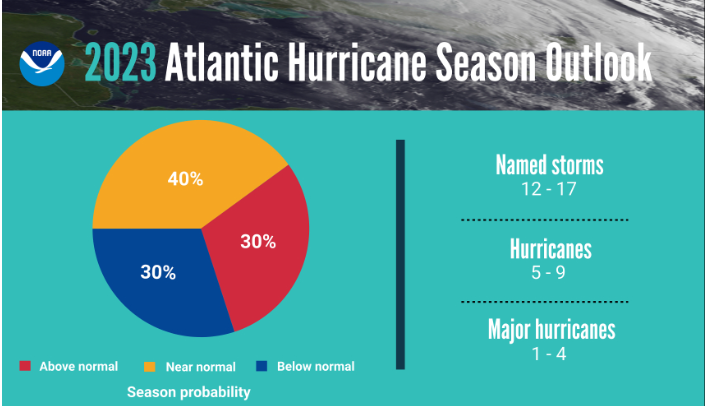
With only a day to go before the 2023 Atlantic Hurricane Season officially begins, forecasters are predicting near-normal hurricane season. The Atlantic hurricane season runs from June 1 to Nov. 30, the prediction is for a 40% chance of a near-normal season, and a 30% chance of an above-normal or below-normal season according to the forecast from the National Oceanic and Atmospheric Administration (NOAA). It is predicting a total of 12 to 17 named storms. Of those, 5 to 9 could become hurricanes, including 1 to 4 major hurricanes with a 70% confidence level in the range forecast.
What a strong El Niño means
In El Niño hurricane seasons, we tend to experience stronger shearing winds occurring over at least the Caribbean Sea and some adjacent parts of the Atlantic Basin. This tends to limit the number and intensity of storms and hurricanes, especially if El Niño is stronger. Also, research shows that fewer storms will form in the Gulf of Mexico and more storms either curl north early towards the northeast and out into the open Atlantic Ocean.
Should we be worried?
Although, the upcoming Atlantic hurricane season is expected to be less active when compared to the most recent years, we must remain on high alert. Some factors that could suppress storm developments in the upcoming season such as La Niña are not likely to be present this time around. After three hurricane seasons with La Niña present, this time around scientists is predicting a high likelihood for El Niño to develop this summer. This type of weather feature generally suppresses Atlantic hurricane activity. One thing for sure is that these outlooks cannot tell you whether or not your area will get struck this season and when that might happen. A season with fewer storms or hurricanes only needs one storm which can make the season a very destructive one.
These outlooks serve as a reminder that the time to be ready for hurricanes is now and everyone in the Caribbean, including Jamaica should remain on high alert for this upcoming hurricane season.